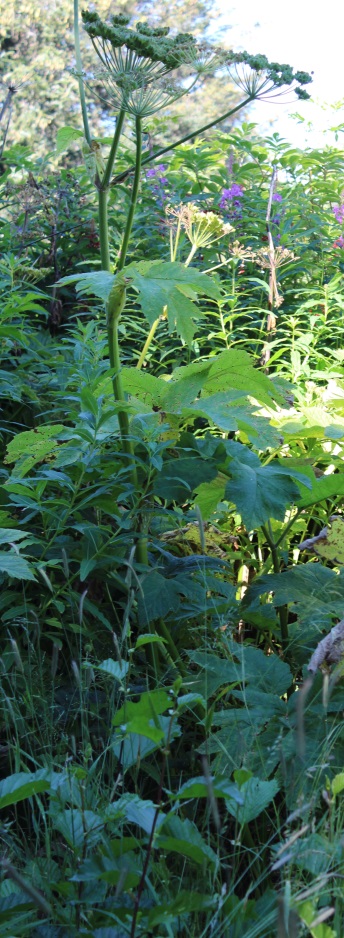Wild Celery

Botanical Name: Ligusticum scoticum
Common Name: Wild Celery / Cow Parsnip
Other Names: Ugyuuteq, Kungkuk, Amaqiitaa (whole plant, male stalks/w/flowers, female stalks/no flowers) Putschke
Found in: Moist ground or deep well-drained soil, common from sea level to subalpine elevations
Physical Characteristics: At full maturity they can be nine (9) feet tall; leaves can reach to 12 inches wide. Stems are stout, hollow, and woolly-hairy. Flowers are in umbrella-like clusters.
Nutritional Value: Sodium, low levels of Vitamins A and C. (based on domestic celery)
Parts of the plant used: Stems, roots
When plant should be gathered: Stems should be gathered early before flowering as stem becomes quite hard. Roots
Plant applications: food, poultice
Reported Benefits: Arthritis, food, infections/inflammations, rheumatism, cramps
Preparation/Processing: Arthritis, infections/inflammations, and rheumatism: A poultice was used to reduce swelling and pains caused from arthritis, rheumatism, and cramps. To prepare, a pad of roots the size of the ailment was made by tying the secondary roots together and crushing them. This pad was then heated on hot rocks, a hot stove, or in hot water before being wrapped in cloth and placed on the afflicted area.
Food: The stem is the edible part of this plant, after the outer layer is peeled. It should be bitten so that the lips do not touch the plant. Scrape the stems of their wooly covering and wash well, use peeled, chopped stems as celery substitute in cream soups, stir-fries, egg rolls, and casseroles.
WARNING: Those who harvest bare-handed or weed whips the plant on sunny days often suffer severe blisters and sunburn. Treatments for these blisters range from jewelweed juice and aloe Vera to vinegar and water. Be aware that inhaling the smoke from burning stalks results in internal blisters and can lead to death; children have been severely affected by throwing stalks on campfires and by handling the foliage. People are encouraged to wear gloves as some seem allergic to them. Schofield explains that furanocoumarin (present in the sap and outer hairs) is the culprit.
